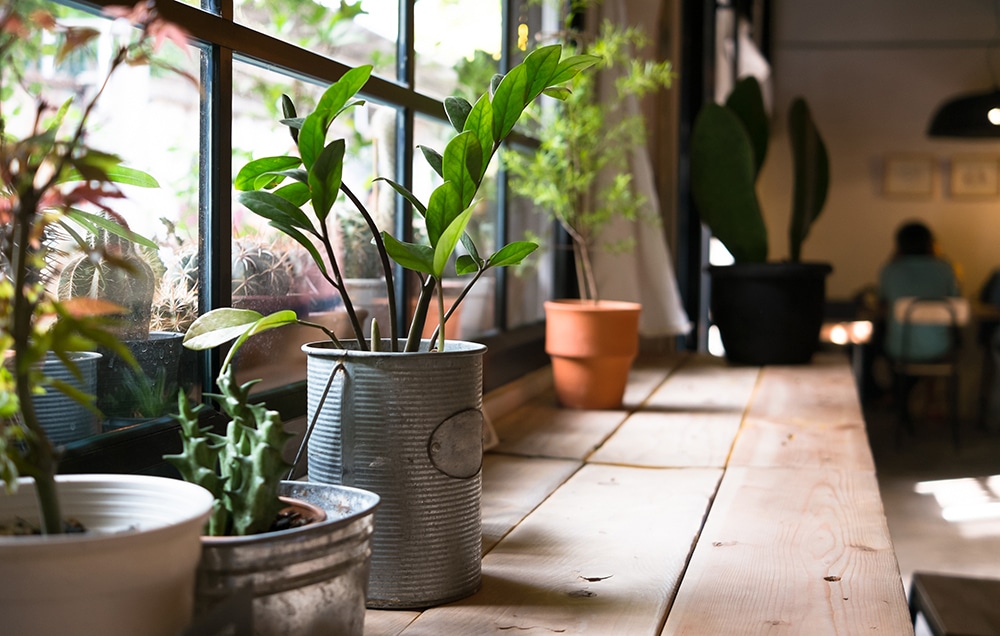The Benefits of Indoor Plants: Enhancing Your Home and Well-Being
Indoor plants have become increasingly popular as more people recognize their numerous benefits. Beyond their aesthetic appeal, these green additions offer a range of advantages that contribute to a healthier and more pleasant living environment. Here’s a closer look at why incorporating indoor plants into your home can be a wise decision.
1. Improved Air Quality

One of the most significant benefits of indoor plants is their ability to improve air quality. Plants absorb carbon dioxide and release oxygen through the process of photosynthesis. Additionally, certain plants can filter out common indoor pollutants such as benzene, formaldehyde, and trichloroethylene. By reducing these toxins, indoor plants help create a cleaner and fresher atmosphere, which can be particularly beneficial in urban settings where air quality may be compromised.
2. Enhanced Mood and Reduced Stress
Indoor plants have been shown to have a positive impact on mental health. Studies suggest that being around greenery can help reduce stress levels and improve mood. The presence of plants in indoor spaces creates a calming environment that can promote relaxation. Caring for plants and observing their growth can also be a fulfilling and therapeutic activity, contributing to overall emotional well-being.
3. Increased Productivity and Concentration

Incorporating plants into workspaces can boost productivity and concentration. Research indicates that the presence of plants can enhance cognitive function and increase attention span. The natural elements of indoor plants provide a mental break from tasks, leading to improved focus and creativity. This is why many offices and study areas are now embracing biophilic design principles, integrating plants to create more conducive work environments.
4. Natural Humidifiers
Indoor plants act as natural humidifiers by releasing moisture into the air through a process known as transpiration. This can be particularly beneficial in dry indoor environments where heating systems or air conditioning can lead to reduced humidity levels. Maintaining optimal humidity levels can prevent issues such as dry skin, respiratory discomfort, and static electricity. Plants such as peace lilies and ferns are particularly effective at increasing indoor humidity.
5. Aesthetic Appeal and Interior Design

Beyond their practical benefits, indoor plants add a touch of natural beauty to any space. They come in various shapes, sizes, and colors, allowing for endless creative possibilities in interior design. Whether used as focal points or as part of a larger decor scheme, plants can enhance the visual appeal of a room. They also offer a sense of tranquility and connection to nature, which can make indoor spaces feel more inviting and comfortable.
6. Educational Opportunities
For families and individuals interested in learning, indoor plants offer educational opportunities. Caring for plants teaches responsibility and patience, and can be a fun way to learn about botany and ecosystems. Children and adults alike can benefit from the hands-on experience of nurturing plants and observing their growth and changes over time.
7. Improved Sleep Quality

Certain indoor plants can contribute to better sleep quality. Plants such as lavender and jasmine have calming properties that can help promote relaxation and improve sleep patterns. By placing these plants in the bedroom, you can create a serene environment that supports restful sleep.
In summary, the advantages of indoor plants extend well beyond their decorative appeal. They improve air quality, enhance mood, boost productivity, act as natural humidifiers, and contribute to better sleep, all while adding beauty to your home. Whether you’re a seasoned plant enthusiast or a newcomer, incorporating indoor plants into your living space can offer numerous benefits for your overall well-being.
Discover more from
Subscribe to get the latest posts sent to your email.







